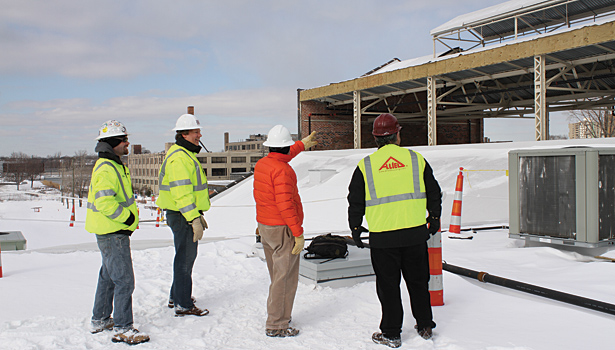In between routine inspections, look for the following hazards:
- Debris-filled or blocked gutters/downspouts/storm drains
- Damaged or cracked gutters/downspouts/storm drains
- Standing water or evidence of past standing water on roof deck
- Accumulation of excessive debris on roof deck
- Suspected microbial growth or other water damage on roof deck
- Evidence of bird, rodent, or insect infestation
- Cracked, damaged, or missing roof deck material
- Cracked or broken roof deck seals that are creating openings for water intrusion
- Improperly sealed flashing systems with evidence of water intrusion
- Cracks, gaps, or other damage to walls
- Suspected microbial growth on HVAC system components
- Presence of contaminant sources (fumes, exhaust) near air intake vents
- Blocked, obstructed, or broken outside air intakes
- Broken or missing air intake screens on air handling units
- Excessive noise generated by HVAC system components
- Open or uncontrolled access to roof

It’s important to take caution when inspecting your roof. Access the roof through a hatch or fixed ladder only and be sure to keep a safe distance from the edge at all times. Contact CEI to make necessary repairs and to help address any additional safety concerns.